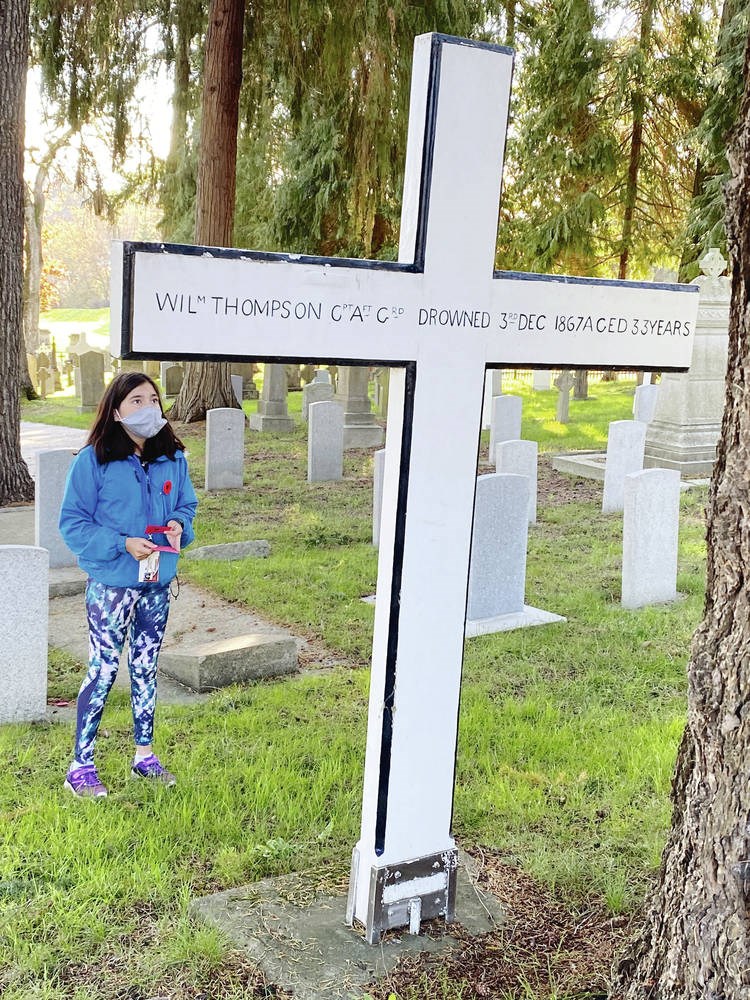On Wednesday, most Canadians will take a few minutes to reflect on the sacrifices of the men and women who served their country in uniform; the families and loved ones impacted by loss; and the conflicts, wars, or peacekeeping missions over the years.
As we have done every year since the armistice in 1918, we will honour the fallen and repeat the commitment: “We Will Remember Them.”
This year, however, we share something else with the grieving mothers of 1918: The experience of a pandemic. Then, it was Spanish Influenza. Now, it is COVID-19. Both impact on how we mourn and remember.
So, how do we observe Remembrance Day in a COVID world? Perhaps we should learn a lesson from our schools.
Last Friday, I was invited to Rockheights Middle School in Esquimalt to observe how they would recognize Remembrance Day in a COVID-19 year.
There, the classes are reorganized into learning groups to limit the chances of outbreaks and help with contact tracing. Masks are worn in common areas.
Each group has their own entrance to the school, their own bathroom and even coloured lanyards, so teachers and students alike can identify, at a glance, a student’s group.
And yet, learning was carrying on: kids were engaged, calm and respectful of each other, while teachers were positive, focused, and upbeat.
Principal Maryanne Trofimuk sets the culture with a quote on her office wall: “You can’t calm the storm, so stop trying. What you can do is calm yourself. The storm will pass.”
For the past seven years, thanks to the energy of Trofimuk and the teachers, the school participated in a national program called No Stone Left Alone.
Each year, the school would assemble, walk to the Veteran’s Cemetery off Colville Road, and pay their respects with a ceremony. Then each student would place poppies on the gravestones of individual veterans. In past years, police motorcycle escorts led the way, pipers played, a student colour party and bands marched, and a bugler played last post.
This year, there was no assembly and no parades. Instead, each class watched a slide show about Remembrance Day and No Stone Left Alone in their classrooms, stood for O Canada, honoured the land with a territorial acknowledgement and sat silently for two minutes.
Then, in their learning groups, they quietly walked to the cemetery and, without formality, the students each chose gravestones, took a few moments to read the veteran’s name aloud and then placed a homemade poppy, as a sign that no stone would be left alone.
Witnessing these simple acts of connection between the fallen and the youth of today was nothing short of moving.
Students were interested and asked questions about the gravestones and the history – about the 18-year-old British sailor who fell to his death from the mizzen mast on HMS Ganges in the 1800s, about the general who rests in peace beside a private, both sharing almost identical gravestones, or what C.E.F. stood for.
Explaining the history of the Canadian Expeditionary Force from the First World War One is a door into our history and from there, into ourselves as a nation. “Experiential learning” was how the principal described it.
So, even in a COVID world, let’s be inspired by the students and creative teachers from Rockheights and other schools who leave No Stone Left Alone.
On Wednesday, Nov. 11, we don’t have to gather in large groups: we can watch a livestream ceremony from home; stop for two minutes at 11 a.m. and reflect; visit a cemetery and share a quiet moment with a veteran; or, like, I will be doing, think about the members of the Canadian Armed Forces, like my son who is deployed in Iraq, or his friend from basic training, Cpl. James Choi, who died recently during live-fire training in Alberta.
Jamie Hammond is a retired colonel who served in Bosnia and Afghanistan.



